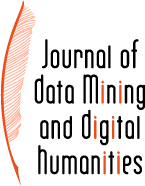 |
Hanna Martikainen - Ghosts in the machine: Can adaptive MT help reclaim a place for the human in the loop?
jdmdh:9108 - Journal of Data Mining & Digital Humanities, 13 août 2025, Vers une robotique du traduire - https://doi.org/10.46298/jdmdh.9108
While the productivity gains brought about by machine translation (MT) can help translators meet ever-tighter deadlines and respond to pressing demands for publishing content simultaneously in different languages, these tools also impose a workflow that tends to reduce the human translator's role to simply correcting mistakes made by the machine in a one-way process with no real interaction. Thus, although more cost-effective, post-editing of MT output also appears a less creative and enjoyable a task than translation. Adaptive MT, on the other hand, has been advertised as a way to recenter the translation process on the human and foster more genuine interaction with the machine. Said to have been developed for professional translation workflows, the technology enables a dynamic work process that is supposedly very different from the repetitive task that post-editing static MT output can be. This paper presents an experiment with adaptive MT conducted during the 2020-2021 academic year. As part of a course on MT and post-editing, second-year master's students conducted group projects on the Lilt platform. In this paper, students' views on the MT engine are analyzed, with a focus on their interaction with the technology. While students recognize the potential of adaptive MT for empowering the human in the loop, MT quality and CAT ergonomics in general appear to have a greater influence on usability than interaction with the machine.
